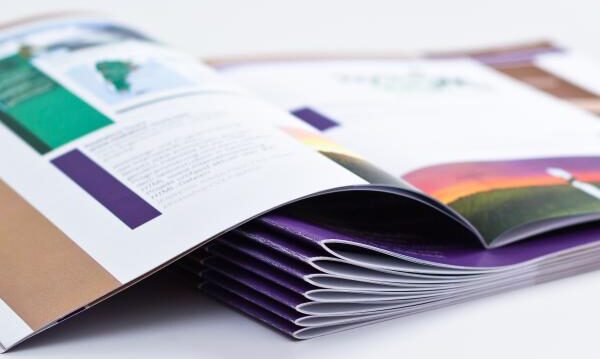Brochures Printing

► Why Brochures Still Matter
- Informative: Clearly presents your products or services in a structured, easy-to-read format.
- Versatile: Ideal for direct mail, trade shows, events, or in-store distribution.
- Cost-Effective: Low production cost compared to digital ads or large campaigns.
- Targeted: Easily customized for specific audiences or industries.
- Credible: A professionally designed brochure builds trust and brand authority.
- Memorable: In a digital age, a physical brochure leaves a lasting, tangible impression.
► Popular Brochure Sizes
Brochures come in a range of sizes, each designed for specific uses and layouts:
- Letter Size (8.5″ x 11″)
- Legal Size (8.5″ x 14″)
- Tabloid Size (11″ x 17″)
- A4 Size (8.3″ x 11.7″)
- A5 Size (5.8″ x 8.3″)
- DL Size (3.9″ x 8.3″)
- Other sizes:
| PORTRAIT | LANDSCAPE | SQUARE |
|---|---|---|
| 4.25 x 11 (108 x 279mm) | 8.5 x 5.5 (215 x 139mm) | 6 x 6 (152 x 152mm) |
| 5.5 x 8.5 (139 x 215mm) | 9 x 6 (228 x 152mm) | 8 x 8 (203 x 203mm) |
| 11 x 8.5 (279 x 215mm) | 12 x 12 (304 x 304mm) |
► Paper Types & Weights for Brochures
Choosing the right paper is essential to achieving the desired look, feel, and durability for your brochure.
- Gloss Coated: Smooth, shiny finish. Enhances color and detail. Great for high-impact visuals.
- Matte Coated: Smooth but non-reflective. Elegant and easy to read. Suitable for professional or minimalist designs.
- Uncoated: Natural texture, writable surface. Ideal for a classic or eco-friendly feel.
Common Paper Weights:
- 100–130 gsm: Lightweight; ideal for folded flyers or mailers
- 150–170 gsm: Standard brochure weight; balanced between flexibility and quality
- 200–250 gsm: Heavier feel; adds a premium touch
- 300+ gsm: Card-like stiffness; often used for covers or high-end pieces
Not sure which to choose?
KHUE TU will help you select the perfect paper — or you can explore our full guide here to learn more about paper types and finishes.
► Book Binding
A suitable binding method ensures your brochure stays neat and easy to handle. Options like saddle stitching, stapled binding, or coil binding can complement your design and purpose.
Discover the details in our Book Binding guide.
Common Types of Brochures
Brochures come in various fold styles, each offering a unique layout and purpose. Here are the most popular types:

Bi-Fold Brochure
Also known as a half-fold, this brochure is folded once to create 4 panels (2 front, 2 back).
Best for: Simple product lists, company intros.
Tri-Fold Brochure
Folded twice into 3 equal sections, resulting in 6 panels (3 front, 3 back).
Best for: Marketing materials, service overviews, general promotion.
Z-Fold Brochure
Folds in a zigzag pattern, similar to the letter “Z,” also yielding 6 panels.
Best for: Step-by-step guides, process explanations, infographics.
Gate-Fold Brochure
Two side panels open outward like a gate, revealing a large center panel.
Best for: High-impact visuals, product launches, portfolio displays.
Double Gate-Fold Brochure
A gate-fold with an additional center fold, creating 8 panels in total.
Best for: Storytelling, detailed presentations, or premium layouts.
Accordion Fold Brochure
Folds back and forth like an accordion, with each panel opening separately.
Best for: Sequential information, event schedules, timelines.
Roll Fold Brochure
Each panel folds inward over the next in a “rolling” motion.
Best for: Long-form content, instructional brochures, educational material.
French Fold Brochure
Also called a right-angle fold. The sheet is folded in half horizontally, then again vertically.
Best for: Invitations, creative layouts, or compact storytelling.
